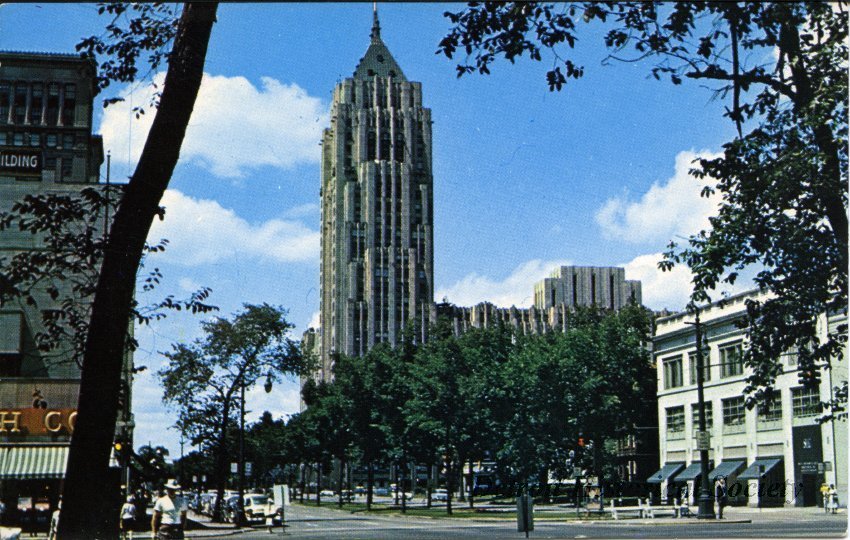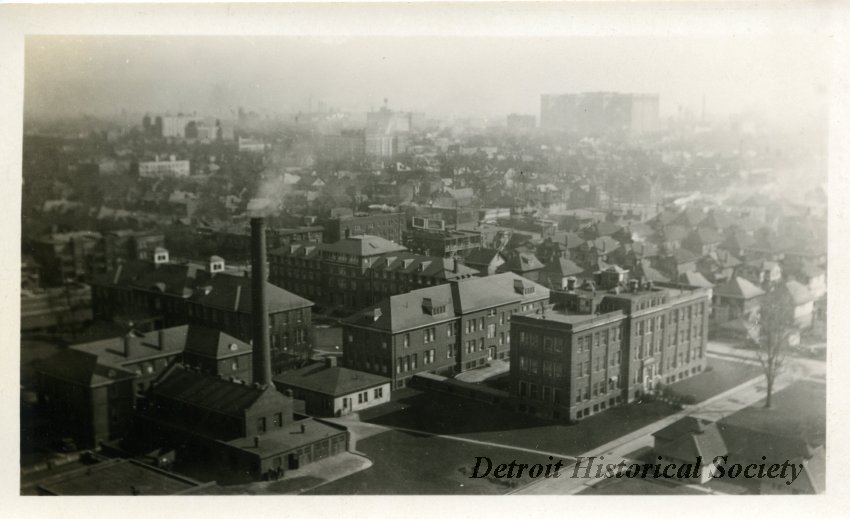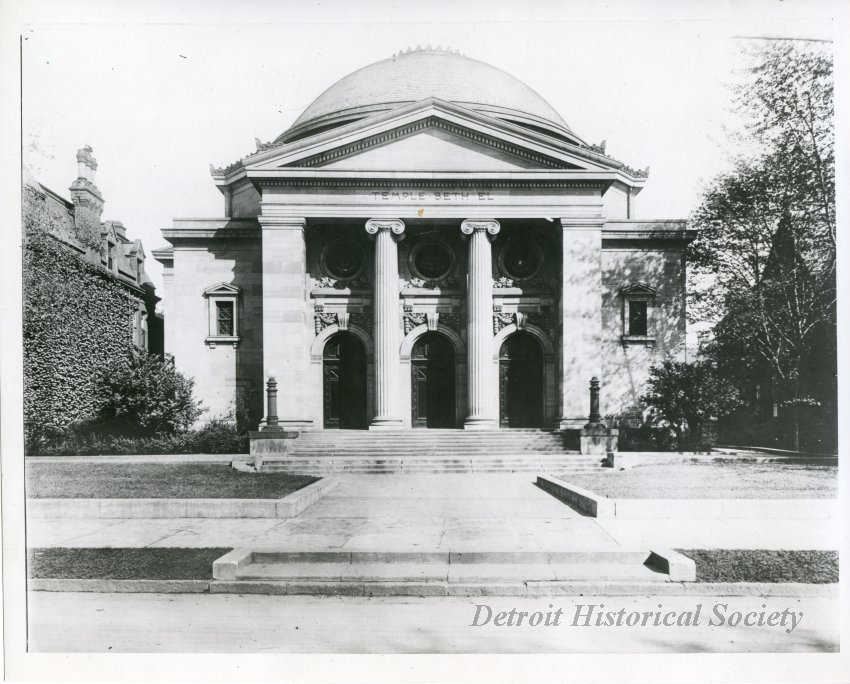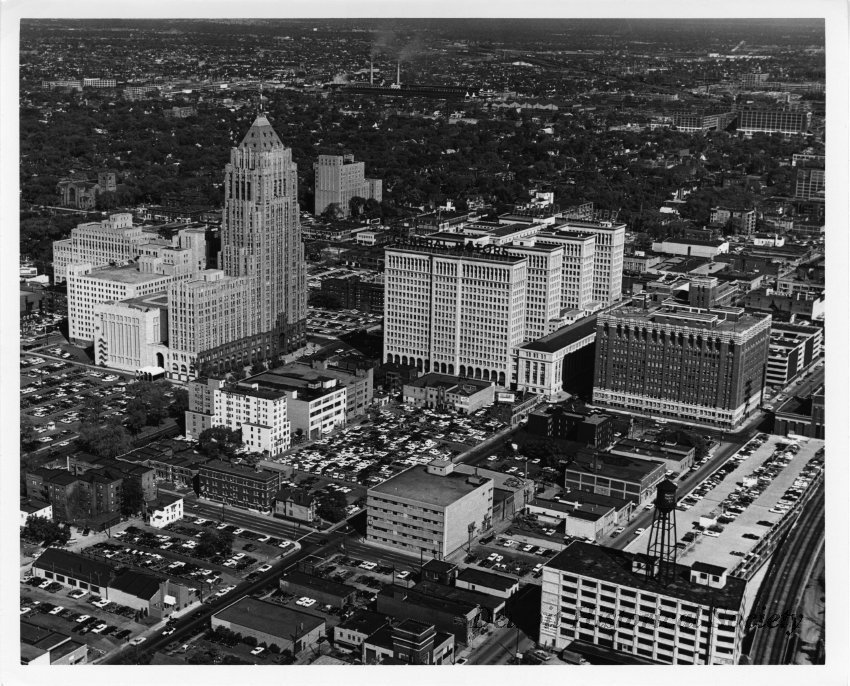Albert Kahn: Detroit's Famous Architect
One of Detroit’s most famed architects, Albert Kahn’s impact can be seen on not only Detroit’s skyline but across the globe.
Albert Kahn was born in 1869 in Prussia before his family emigrated to Detroit in 1890. His father was a rabbi and ran a restaurant in the city while his mother was a skilled musician and artist. In order to help support his family, Albert became an office boy and apprentice architect at John Scott & Company before being fired. He was then hired by another Detroit architect, George Mason — responsible for the iconic Masonic Temple.
Albert received no formal education but gleaned his knowledge from mentors like Mason.
By 1895, Albert and his brother Julius established the architectural firm, Albert Kahn and Associates. Some of Detroit's iconic buildings were built by the firm.
The Fisher Building

Color photograph of the Fisher Building from Grand Boulevard, facing west. From the Detroit Historical Society collection, c. 1960.
The iconic Fisher Building was completed in 1928. A perfect example of Art Deco style, the building measures more than 440 feet high, with a barrel-vaulted lobby that features more than 40 different kinds of marble and an exterior covered in more than 325,000 square feet of marble.
Herman Kiefer Hospital

Sepia-toned photograph of the Herman Kiefer Hospital complex in Detroit from the Detroit Historical Society collection. The photo looks southeastward and shows an elevated view of the hospital buildings in the foreground, c. 1927.
The Herman Kiefer Hospital complex’s first two buildings were opened in 1911, designed by George D. Mason — a mentor to Albert Kahn. The hospital continued to expand and in 1919 the complex contained five buildings. In 1921, Albert Kahn was hired to design two additional pavilions.
Temple Beth El

Black and white photographic print depicting the west facade of Temple Beth El at 3424 Woodward Avenue. From the Detroit Historical Society collection, c. 1910.
Temple Beth El was the first Jewish congregation in Michigan. Initially, the congregation worshiped at various locations before growing too large and deciding they needed a permanent location. The congregation purchased several churches, continually outgrowing them. In 1903, the congregation hired Albert Kahn, a member of its congregation, to construct a new temple on Woodward and Elliot. Once again, the congregation outgrew this location — which eventually became Wayne State University’s BonstelleTheatre and moved to a new home at Woodward and Gladstone in 1922, designed by Kahn again. The congregation would once again, outgrow this location eventually and in 1973 Temple Beth El’s current home in West Bloomfield would be designed by another recognizable Detroit architect, Minoru Yamasaki.
Argonaut Building

Black and white aerial photograph of the New Center area showing the Fisher Building, the New Center Building. the General Motors Building, and the Argonaut Building (at top right). From the Detroit Historical Society collection, c. 1965.
The brick-clad, eleven-story Argonaut Building also opened in 1928 and was home to General Motor’s design, engineering and research departments until 1956. The building’s dark red brick complements the nearby General Motos headquarters (now known as Cadillac Place). In 2007, GM donated the building to the College for Creative Studies where it reopened as the A. Alfred Taubman Center for Design and houses the school’s advertising and design programs alongside the Henry Ford Academy: School for Creatives Studies and the headquarters of Shinola.
Visit the Museum
The Detroit Historical Museum has recently opened the newest installation in the Robert and Mary Ann Bury Community Gallery entitled Albert Kahn: Innovation & Influence on 20th Century Architecture. This exhibit was created in partnership with the Albert Kahn Legacy Foundation. See it through July 3!

